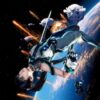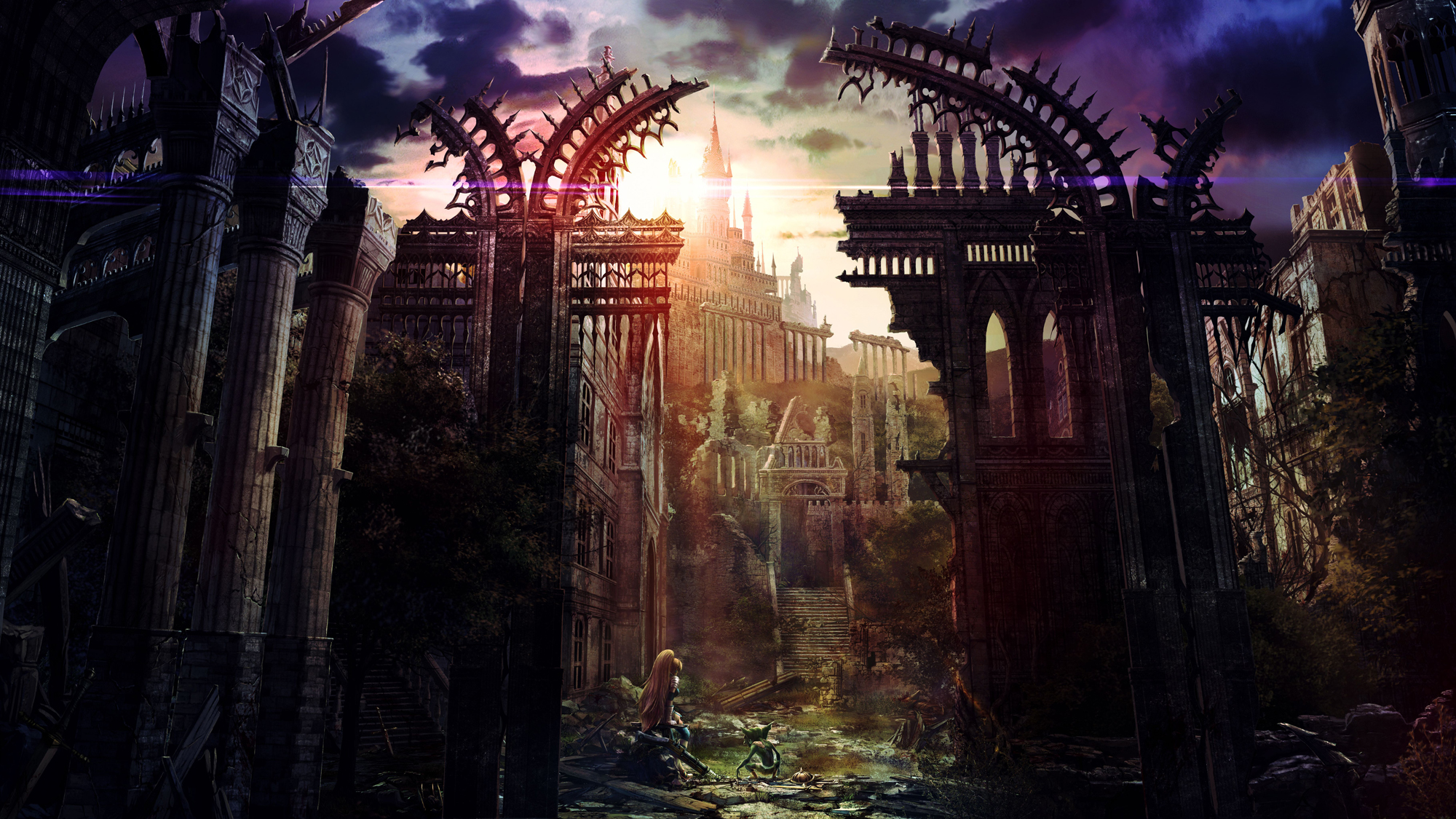

In a mystical medieval-inspired world, the substance known as Pluton is a rare and valuable mineral that is the source of all magical power. Humanity has fallen back to a single city, known as Feste, which is the last stronghold against the terrors of the land. In order to seek out more Pluton, the explorers of the city, known as Bergmans, hire bodyguards to delve into mines scattered throughout the wilderness in order to seek out more of the precious ore and maintain and power the city. Following the adventures of Geoff and Vasily, a pair of bodyguards hired to protect the Bergman Anka, players are cast out into the land to seek out Pluton and stop the rising evil from the mines below.

Keeping to the standard that is common with most JRPGs, the characters and environments in NAtURAL DOCtRINE (yes, that is how it is spelled) are represented on two levels; rendered anime screens and 3D textured models. However for this game it becomes an issue and adds a disconnection between the two. Characters are vibrant and detailed in images, yet the character models almost barely match their anime counterparts. The characters themselves come off almost like figurines, with permanent expressions plastered on their faces, and clothing and armour that seems mapped to their model rather than independent. The design also looks like it may have been ripped straight from Fire Emblem or a Final Fantasy game, as there is seemingly nothing unique about them. When fighting enemies in-game such as orcs, goblins and knights, there is little variation between the character models and ends up looking like an army of clones, which can get confusing when fighting multiple units at once.
Similarly, the world map and imagery of locations are vivid and colourful, but the 3D environments are dull and generic. From the tutorial level it appears something is amiss; gameplay areas are isolated and do not feel like part of a larger world. Some wall textures were noticeably pixelated and low quality. It really did not feel like a next-gen game when playing it on the PS4, and I found that the game looked a lot more at home on the PS Vita via Remote Play.

The HUD during the game becomes extremely cluttered at times; with the turn order occupying the top of the screen, a scrolling information and help bar occupying the bottom of the screen (with no option to turn it off either), as well as information on the left of the screen during attacking or defending actions. Accompany this with an at times awful camera and things begin to get extremely confusing, with just too much on screen at one time.
The soundtrack does not aid in alleviating any visual issues; tracks are recycled through each battlefield and get repetitive and annoying, especially with the speed of gameplay. Character voices begin to get annoying and each character has a limited quote range, leading to consistently grating comments that will have you reaching for the mute button.

NAtURAL DOCtRINE’s core mechanics shift away from a general turn-based strategy game, and it is here that things get very complex. While the game retains the general principle of being able to move about the map and attack adjacent enemies during your team’s turn, it also adds the ability for your team to skip the queue and attack as one. Certain actions of your units (titled “initiative) allows nearby units the ability to simultaneously attack, performing a ‘tactical link’ that can be used to greatly increase attacking power. The brief tutorial level throws you straight into it, and for most of the game it is up to the player to work out what they are doing.
Now here is where it gets even more complex; depeding on particular allies and their abilities, the distance between linked units raises the attack bonuses between them – for instance, four units in a square at each corner would yield a maximum attack bonus. Ranged units add critical hit bonuses, and can also be used to add attack power. Through careful planning and a mess of coloured bars, a single ‘tactical link’ move can exterminate a group of enemies in one fell swoop. Through this you can also eliminate the enemies that are next in line on the turn bar, preventing them from even making a scratch on your team. When this happens it is extremely rewarding; characters level up faster and levels progress quicker, and the game begins to become slightly more addictive. Risks and rewards begin to pay off. The downside to this is that one wrong move can lead to your team being defeated in a single turn by the enemy; one wrong character placement or maneuver and a member of my team would be killed in an instant. That isn’t to say that the difficulty level is high (ashamedly I started on easy), but the complexity of the tactics that need to be considered is sometimes just too much.

Targeting enemies is quite annoying, as it requires either a double-tap of the Triangle button to target the nearest enemy, or the right analogue stick to target a specific enemy. Multiple times I found myself targeting the wrong enemy and putting myself into a dangerous situation all because I hit the wrong thing. Advanced tactics are taught in the first gameplay level, but considering it takes a while to understand the basic mechanics, I still did not manage to employ many of them. With the amount there is to learn, the game could benefit from a prologue to introduce the story and characters, and a series of tutorial levels rather than a tutorial level that includes lumping the story in.
The biggest issue with the game’s turn-based system is that the developer Kadokawa Games seemingly tried to craft something good, but instead fell just short of the mark, leaving a system that takes a long time to get used to. Three days in and I was still making errors due to the amount of options I had to go through to complete a turn. It doesn’t help that turns can be extremely slow, and cutscenes are nearly unskippable, leading to lengthy rounds that leave you wondering why you got into it in the first place.



